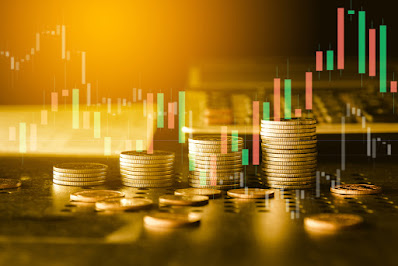Glittering Opportunities: Gold Trading in Asia
Introduction:
Asia, often referred to as the "Golden Continent," has an enduring affinity for gold that spans centuries. From vibrant cultural traditions to robust economic investments, gold holds a special place in the hearts and portfolios of Asians. In this article, we explore the multifaceted world of gold trading in Asia, shedding light on the historical significance, contemporary trends, and the factors that make it a thriving hub for gold enthusiasts and investors.
Historical Significance:
Gold has deep historical roots in Asia, dating back to ancient civilizations like India, China, and Persia. It was revered as a symbol of wealth, spirituality, and cultural heritage. The allure of gold was so powerful that it shaped the trade routes of the Silk Road and influenced the art and architecture of the region.
Cultural Significance:
In many Asian cultures, gold is an integral part of celebrations, weddings, and religious ceremonies. Gold jewelry, coins, and ornaments are commonly given as gifts during important life events, symbolizing prosperity and good fortune.
Modern Asian Gold Markets:
Asia is home to some of the world's largest gold markets, including:
1. **India**: India is the world's second-largest consumer of gold, with a rich tradition of gold jewelry and ornaments. Gold purchases spike during festivals like Diwali and Akshaya Tritiya. The country also has a significant interest in gold as an investment, with many individuals holding gold in the form of jewelry and coins.
2. **China**: China is the world's largest consumer of gold, driven by a growing middle class and a cultural affinity for gold. It also has a strong gold mining industry, making it a key player in the global gold market.
3. **Southeast Asia**: Countries like Thailand, Malaysia, and Indonesia have growing gold markets. Gold is often used in traditional ceremonies and is gaining popularity as an investment.
4. **Dubai**: While not in Asia geographically, Dubai has emerged as a significant gold trading hub, attracting investors and traders from across the continent.
Factors Driving Gold Trading in Asia:
Several factors contribute to the thriving gold trading scene in Asia:
1. **Economic Growth**: Asia's rapid economic growth has created a burgeoning middle class with increased purchasing power, driving demand for gold as both jewelry and investment.
2. **Cultural Traditions**: Deep-rooted cultural traditions and beliefs surrounding gold continue to influence buying patterns.
3. **Diversification and Investment**: Gold is considered a safe-haven asset in times of economic uncertainty, prompting investors to allocate a portion of their portfolios to gold.
4. **Government Policies**: Government policies, such as gold import restrictions and taxation, can influence the gold market in some Asian countries.
Challenges and Future Outlook:
Despite the thriving gold markets in Asia, challenges such as illegal gold trade and environmental concerns related to mining exist. Additionally, digitalization and the rise of cryptocurrencies pose new competition to traditional gold investments.
However, gold's enduring cultural and economic significance suggests that it will continue to shine brightly in Asia. The region's deep-rooted love for gold, coupled with its economic dynamism, positions it as a powerhouse in the global gold trading landscape for years to come.
Conclusion:
Gold trading in Asia is more than just a financial transaction; it's a reflection of rich cultural traditions, economic aspirations, and a deep-rooted reverence for this precious metal. As Asia's economies continue to grow and evolve, so too will its relationship with gold, ensuring that this "Golden Continent" remains a vital player in the global gold market.







No comments